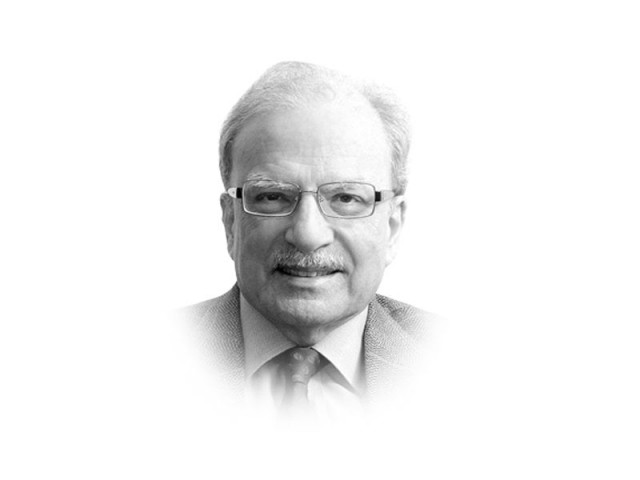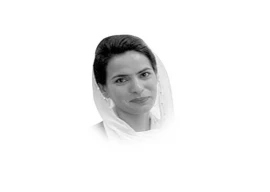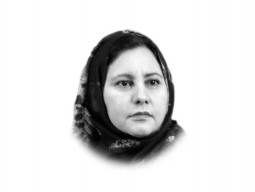
Nation-building requires more than recognised state boundaries and a functioning government operating out of the capital city. It requires at least two other things: charismatic leadership and political parties that have presence in all the regions of a nation-in-the-making. There were charismatic leaders in Pakistan’s history but they were not able to play the nation-building role expected of them. It was Muhammad Ali Jinnah’s charisma that brought the diverse community of British India to gather around him and support his attempt to create the Pakistani state. Once the state was founded, he began the difficult work of creating a nation. His often quoted speech of August 11, 1947, three days before he was sworn in as the governor general of the new country was an appeal to his people to give up their differences and create a nation. “You may belong to any religion or caste or creed that has nothing to do with the business of the state,” he told his audience made up of the members of the Constituent Assembly. But by the time he won Pakistan, he was a sick man. His illness was kept secret from his opponents lest they wait him out. They believed that with him would also die the demand for Pakistan. Had Liaquat Ali Khan not been assassinated only three years after becoming the undisputed leader of post-Jinnah Pakistan, he may have succeeded in building a nation. Zulfikar Ali Bhutto was also charismatic which made it possible to revive what was left of Pakistan after the departure of Bangladesh. But he got distracted by ambition before he could create a nation out of the country that was left for him to govern.
The Pakistani state had two beginnings: one in 1947 with the partition of British India and the other in 1971 with the departure of what is now Bangladesh. Pakistan today is either 71 years old or 47 years old depending on how we define its origin. But it is still not a nation in which coexistence of groups with different identities are fully accommodated with all rights available to them. Will Imran Khan’s ‘naya Pakistan’ create a Pakistani nation? I will get to this question at a later day. At this stage it would be useful to go into the country’s history and identify how profound demographic changes have placed hurdles in the way to Pakistan becoming a nation. Muhammad Ali Jinnah had a simple interpretation of the demographic complexity of the Indian subcontinent. It was then governed by the British who had wielded total power for almost a century. According to Jinnah, India’s diversity had a simple explanation. It was religion. There was, he said, not one Indian nation but two. Hindus made up three-fourths of the Indian population of 400 million. The remaining one-fourth, or 100 million, were Muslims. The two could not live side by side within the boundaries of one independent state. Only a partition along religious lines — a Hindu India and a Muslim Pakistan — could save the subcontinent from a communal disaster. There were everyday evidences of the separateness of the two religious communities. For instance, water hawkers plying their trade on railway stations sold ‘Hindu pani (drinking water)’ separately from ‘Muslim pani’.
The British and Hindu leaderships were not prepared to accept Jinnah’s ‘two-nation theory’ and they resisted the demand for the creation of Pakistan. They finally agreed to create Pakistan as the only solution to what had come to be called the ‘Musalman problem’. This came about once the leaders of the Hindu-dominated Indian National Congress came around to the view that nation-building in independent India would be easier if the Muslims could be reduced to a manageable minority. Two partition lines would be drawn; one in the northwest of the subcontinent to separate the Muslim majority areas and the other in the northeast. The two lines were drawn by a British lawyer with no knowledge of the complexity of the vast country over which his people had governed. In accepting Jinnah’s logic of partition, the British stretched it to the provinces, resulting in the separation of Hindu and Muslim areas in the provinces of Punjab and Bengal. When the lines were revealed, they showed that of the 100 million Muslims in British India, 30 million would be left in the independent Indian state. The remaining 70 million were divided almost equally between East and West Pakistan.
Of the 30 million Muslims who could not be accommodated in the way Pakistan was designed, eight million left their homes and most of their belongings and headed towards Pakistan, mostly on foot. There were non-Muslims in Pakistan as well. Those in the western wing of the country — six million of them — left their homes and assets and went to India. This was a massive exchange of population — an ethnic cleansing without precedence in human history. The term ethnic cleansing had not come into use at that time; for that we had to wait until the bloody break-up of the artificially-created state of Yugoslavia.
Published in The Express Tribune, September 17th, 2018.
Like Opinion & Editorial on Facebook, follow @ETOpEd on Twitter to receive all updates on all our daily pieces.














COMMENTS
Comments are moderated and generally will be posted if they are on-topic and not abusive.
For more information, please see our Comments FAQ